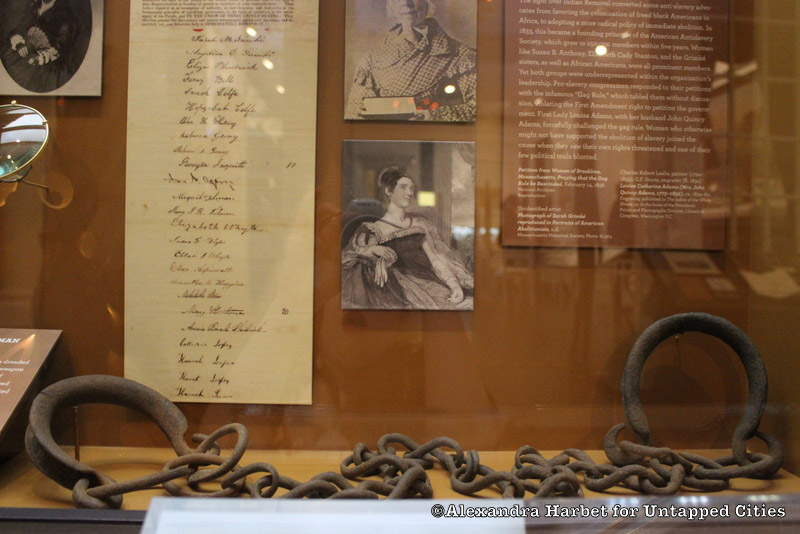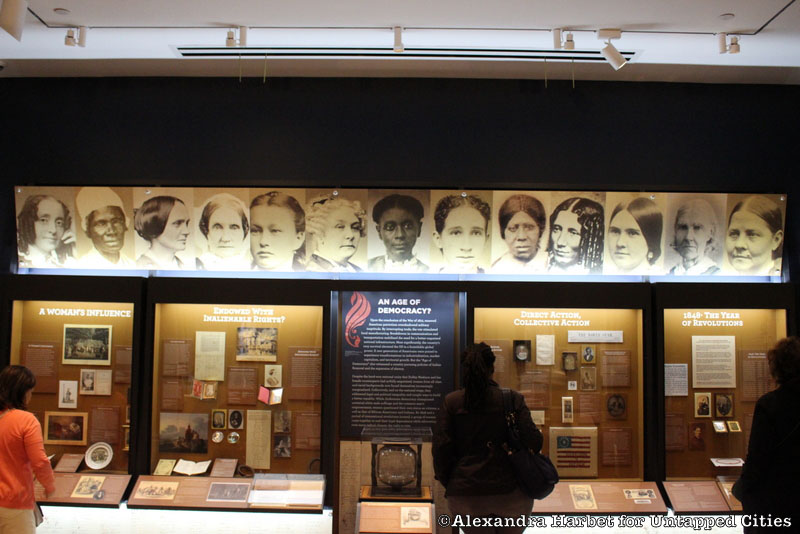
Women have played large roles in the history of America but often get overshadowed by male historical figures. With a new rotating exhibit The New-York Historical Society aims to shine a spotlight on the notable women who helped make the United States what it is today by creating a permanent space dedicated to women’s history in its newly renovated fourth floor called Saving Washington. The inaugural exhibition for the Center for Women’s History was directed and curated by Valerie Paley and opened on April 26, 2017.
The current Joyce B. Cowin Women’s History Gallery is 1,500 square feet features over 150 items that highlight the impact of First Lady Dolly Madison and other integral women of the early American era. The exhibition closes on July 30th when it will be replaced with a different women’s history exhibit.
To get a taste, check out these 10 highlights of the New Center for Women’s History exhibit:
10. Office of the First Lady
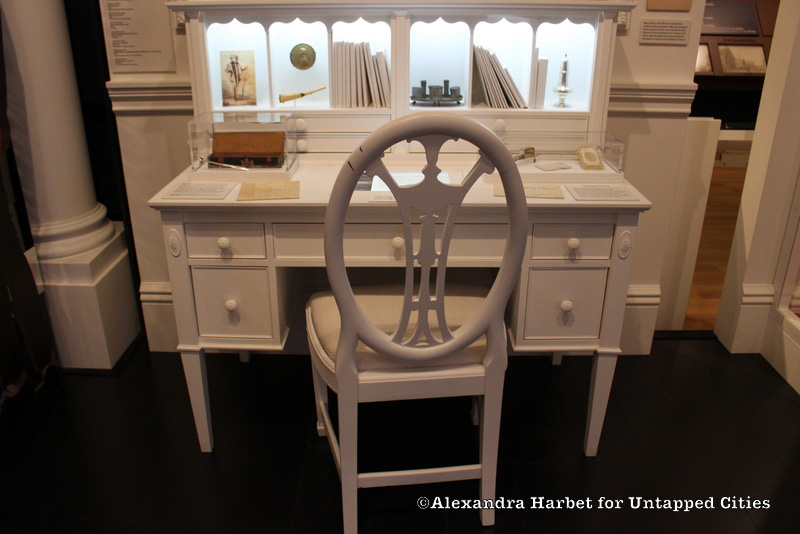
At Dolly Madison’s desk, guests can view what the First Lady was up to in her day to day life. Dolly was known for calling and visiting anyone of import which set the precedence for the First Ladies that would follow her lead. On display at the desk in her exhibit are calling cards of people she kept in contact with and some of her preserved artifacts.
Dolly was incredibly social and corresponded with a wide array of influential people through letters, visits, and parties. Guests can interact with several of her written letters between people like Thomas Barton and Mary Latrobe via the touch screen on her desk.
9. Saving Washington
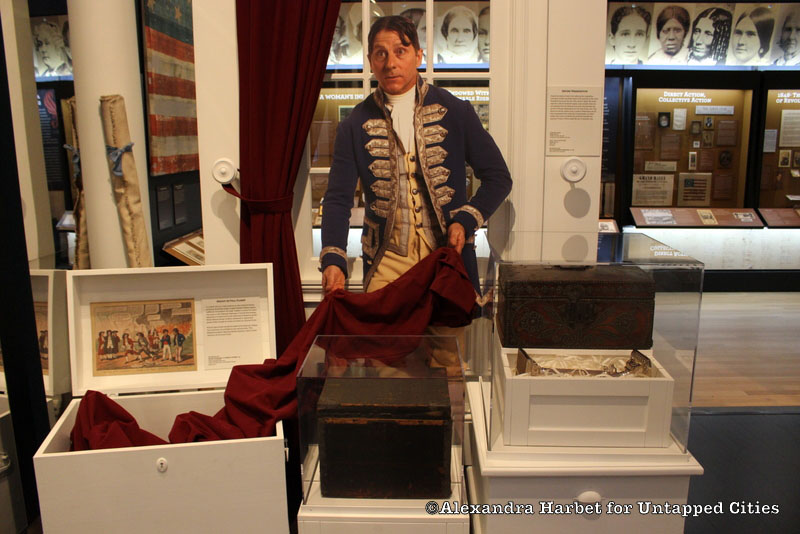
Matching the name of the fourth-floor exhibit, this portion of the exhibit displays Dolly’s bravery and the importance she placed on the importance and symbols of the White House. Even though she was in danger from the threat the War of 1812 posed, she stuck around The White House to grab anything she could.
She managed to save the President’s papers, silver, her draperies, and the portrait of George Washington from the State Room. This act of bravery helped showed the United States what women were capable of which was empowering to the historical women who would follow.
8. Fashion of the First Lady
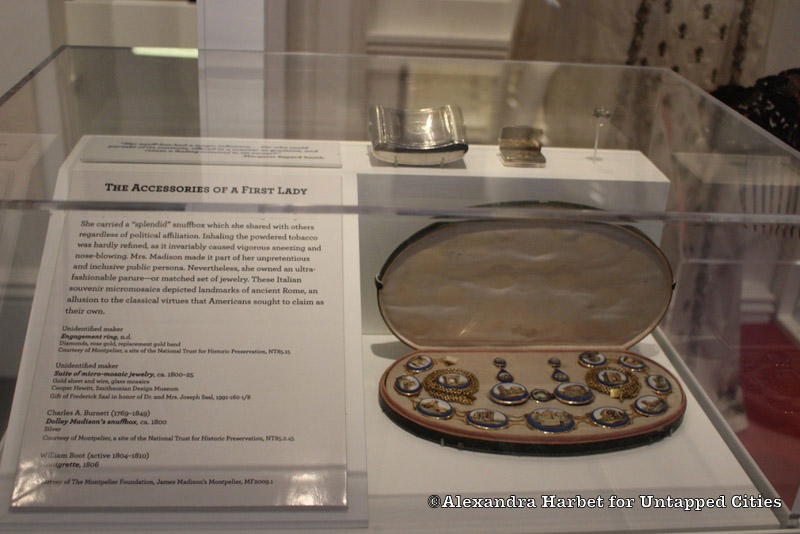
Unlike most women of her time who wore wool, cotton, or linen, Dolly chose finer garments made of satin, velvet or silk. She also preferred fancy trains and trimmings over simplicity. Dolly was fond of headpieces and could often be found sporting headpieces that were usually reserved for the British monarchy like tiaras. She often had people shop for her in Paris and it was clear that Europe still played heavily in the fashion choices of the Western World.
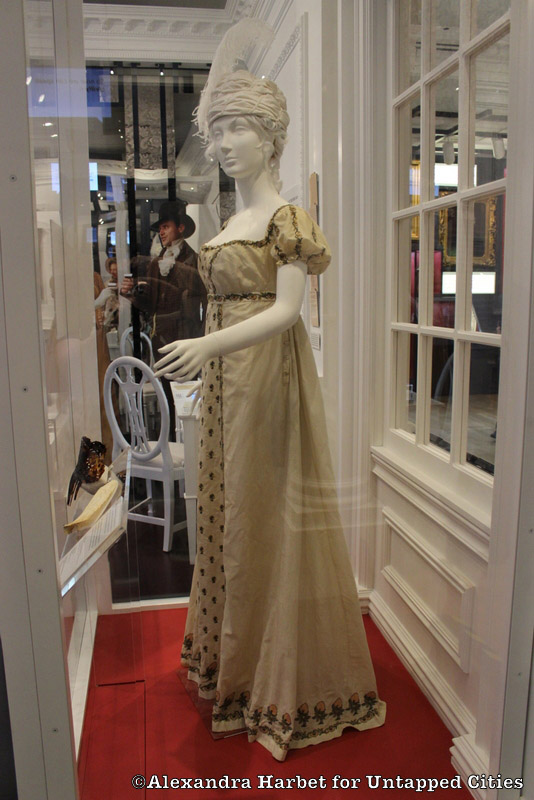
Dolly Madison’s authentic clothing and accessories can be found on display in the exhibit. Guests can view her white dress, her snuffbox, her matching jewelry accessories, her fan, and her hair comb to name a few.
7. The Year of Revolutions
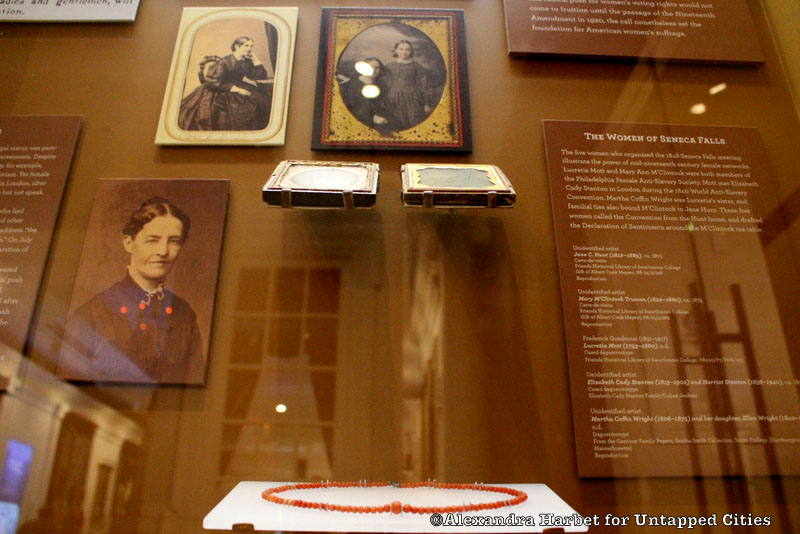
1848 was a time of revolutions for political and social change in America. Activists took the stage to talk about freedom of speech, participatory government, and the rights of marginalized groups. People like Elizabeth Cady Stanton took a stand for women’s right to vote and shed a light on women’s suffrage.
The Women’s Rights Convention at Seneca Falls was organized in 1848 by Lucretia Mott, Mary Ann M’Clintock, Martha Coffin Wright, Jane Hunt, and Elizabeth Cady Stanton where they drafted the Declaration of Sentiments and discussed the “social, civil, and religious condition and rights of women.” Displayed in the case is an excerpt from the Declaration of Sentiments, portraits of the women, and Elizabeth Cady Stanton’s coral necklace.
6. Women’s Voices
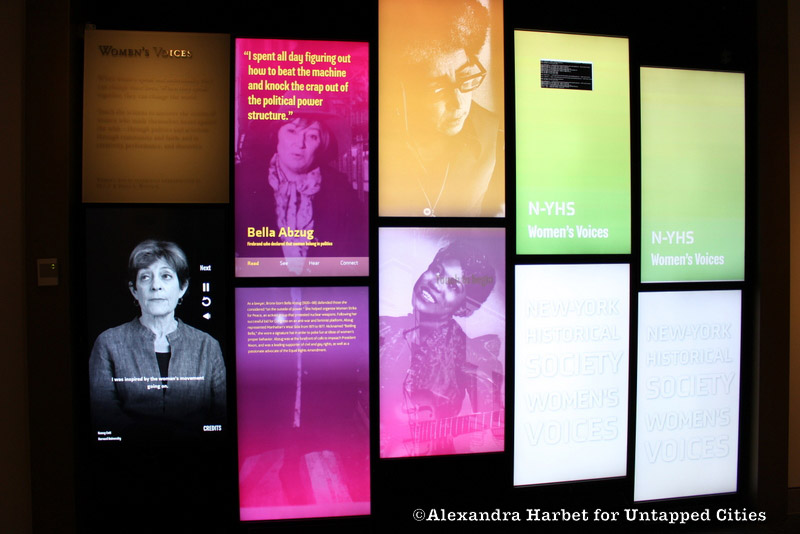
The words “When women speak out individually, they can change their lives. When they speak together, they can change the world” greets guests when they walk into the Women’s History exhibit. The massive Women’s Voices display features nine touch screens that allow guests to interact with history at the touch of their finger.
The featured women are both modern and historical women that include the well known Bella Abzug, a leader of the Women’s Rights Movement, and lesser known women like professors who change the world every day with the knowledge and empowerment they foster in their students every day.
5. The Female Politician
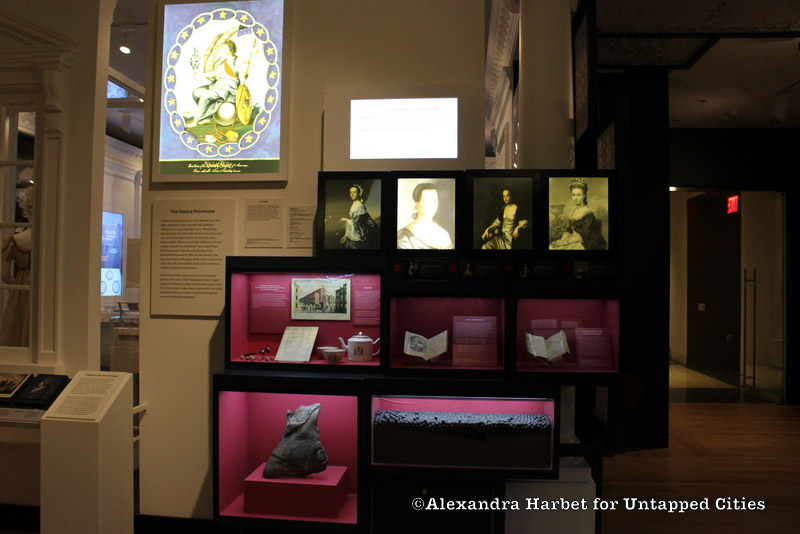
This part of the exhibit features female politicians that didn’t take a back seat and openly participated in the political discussion in the 1790s. They openly spoke out in debates at salons, social events, rallies, until women’s active participation became stigmatized and dwindled by the turn of the nineteenth century.
While Dolly Madison had an important role to play, she wasn’t seen as an active politician. Instead, she was often seen as the person to unite different political parties as she got them together at dinner parties and united the United States in a way that it hadn’t been before she became the First Lady.
Touch screens featuring quotes and portraits of Mercy Otis Warren, Abigail Adams, Judith Sargont Murray, and Sarah Jay are featured prominently in the exhibit. Also displayed are several of the bullets made by women and children of Litchfield Connecticut when they were sent four thousand pounds of gilded lead torn down by New Yorkers from a statue of King George III.
4. Dolly’s Table
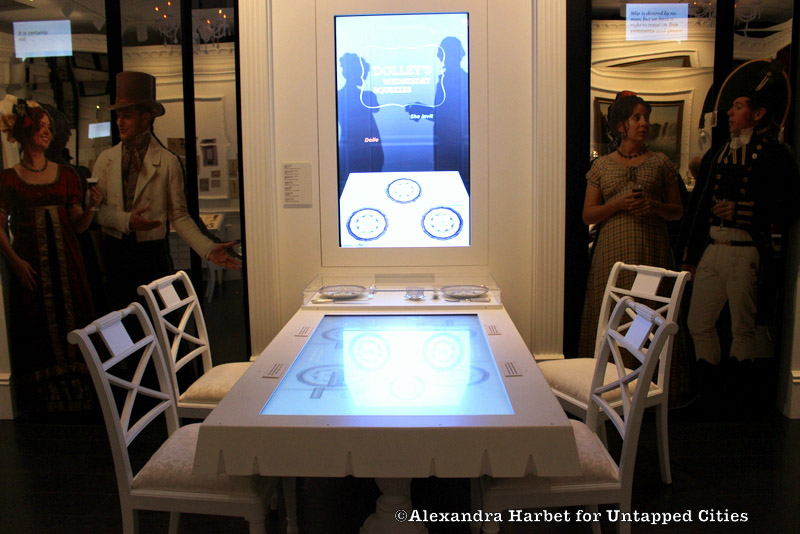
Guests can play an interactive game on the massive touch screen dinner table to get a feel of how dinner conversations and debates went during Dolly’s time as the First Lady. They can choose to have debates between the Federalist, Elizabeth Fox, the Republican, Samuel King, the Republican, Margaret Logan, and the Federalist, David Gardener.
The dichotomy between choosing a man or a woman to debate is apparent just by the choices of how to interact with the other people at the table. Women are given choices like “nicely inquire,” “use flattery,” and “gently criticize” on how to go about debating. This paints a picture of how women were able to be involved in politics without making it inherently obvious that they had opinions of their own to the men they were debating with.
3. Objects of Refinement
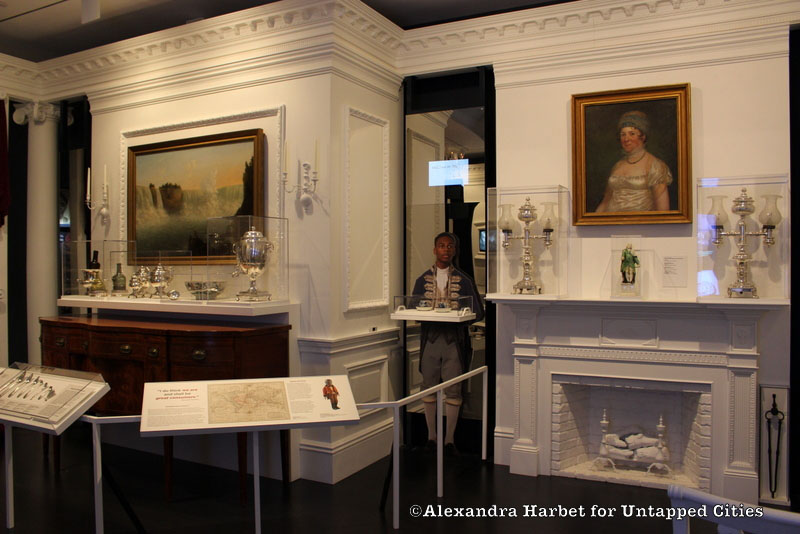
While most of the United States didn’t have forks at all in the Eighteenth Century, people of political affluence, the social elite, and the economic elite took pride in owning refined objects which made a statement about their manners and status. The more ornate and silver the object, the higher the status.
The middle class aimed to follow this practice and created less expensive versions of these objects which is still a commonality today as most Americans have at least one metal silver spoon in their cutlery drawer. On display in the exhibit is a slew of the finest silver spoons, wine bottles, bowls, and other expensive objects of status that could be seen in the White House in the 1800s.
2. Designs for the White House
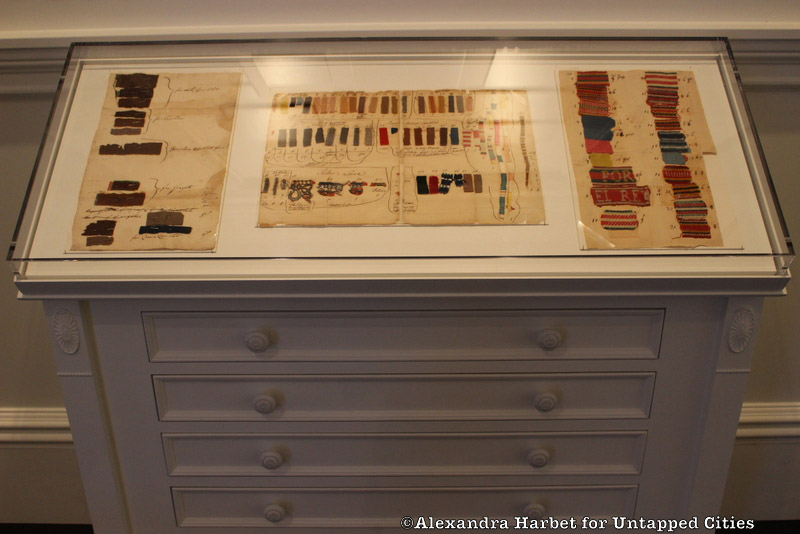
Dolly Madison was responsible for setting the look of the White House. Along with Mary Latrobe and Benjamin Latrobe, Dolly chose elements of Greece and Rome for the decorations in the White House as they avoided anything that reflected the lavish European aristocracy. Some key elements they chose to highlight were geometric symmetry, bright lights, and colors that resulted in a tasteful combination of elegance and simplicity.
Choosing American crafters was important to Dolly and the Latrobes which helped the local economy. On display in the exhibit are fabric swatches, trade cards, and Henry Latrobe’s design drawings.
1. Endowed with Inalienable Rights
Following the War of 1812, women began to join the political conversation more and more. They signed petitions protesting Indian removal and slavery, the challenged the Gag Rule and they started speaking their voices louder and less politely than they had in the past.
The activism shown by women of this time was a movement that eventually led to the Women’s Rights Movement. Displayed in a case in the exhibit are portraits of important women like Abby Kelley Foster, a petition protesting the Gag War, and slave ankle shackles.
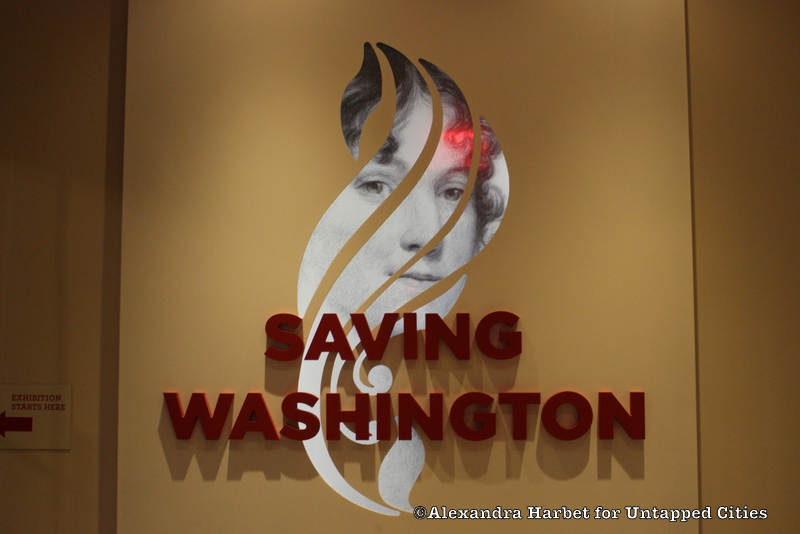
The Center for Women’s History exhibit is a great introduction to women’s role in politics and forming the Uniteed States. These important women paved the way for future generations of women and the exhibit is a fascinating portal into the struggles and triumphs of women from the 1700s and 1800s.
Next, discover the movement to install the first female statue in Central Park.
Get in thouch with the author at LitByLiterature.






